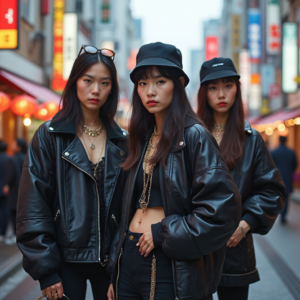What Color Is the Dress? 3 Easy Tests to Settle the Debate
Introduction: What Color Is the Dress
Remember that infamous photo that split the internet in 2015? One person swore the dress was blue and black, while another was absolutely certain it was white and gold. Friends argued, families debated, and social media exploded—all because of a single image.
If you’re still wondering, “What color is the dress, really?”—you’re not alone. The debate might feel silly, but it reveals something fascinating about how your brain processes color.
The good news? You don’t have to keep guessing. In this guide, you’ll discover:
✅ Why people see different colors (it’s not just about your screen)
✅ 3 simple tests to prove the dress’s true colors
✅ The science behind the illusion—and what it says about human perception
✅ How lighting and context trick your eyes (plus real-world examples)
By the end, you’ll have the tools to settle this debate for good. Ready to find out the truth? Let’s dive in.
Table of Contents
Why Do People See Different Colors in the Dress?
Before we get into the tests, let’s break down why this simple image caused so much confusion. It all comes down to three key factors:
1. Lighting Plays Tricks on Your Brain
Your eyes don’t just see color—they interpret it based on surrounding light. The original photo had strong blue-tinted lighting, which made shadows appear gold.
- If your brain assumes the dress is in shadow, it compensates and sees white and gold.
- If your brain assumes it’s in bright light, it appears blue and black.

2. Your Screen Settings Change Everything
Ever noticed how the dress looks different on your phone vs. a laptop? That’s because:
- High brightness = more likely to see white/gold
- Low brightness = shifts toward blue/black
3. Age and Eye Biology Matter
Studies show that younger people often see white and gold, while older eyes lean toward blue and black. This is due to changes in how our retinas process blue light over time.
3 Easy Tests to Determine the Dress’s True Colors
Enough theory—let’s settle this once and for all. Try these three tests and see which side you’re on.
Test 1: Adjust Your Screen Brightness
- Pull up the original dress image.
- Maximize brightness—does it look white and gold?
- Lower brightness—watch it shift toward blue and black.
Why This Works: Proves that lighting dramatically affects perception.
Test 2: Cover the Background
- Use your hands to block everything except the dress.
- Does the color seem clearer now?
Why This Works: Removes misleading context that tricks your brain.
Test 3: Print It or Change Lighting
- Print the image or view it under natural sunlight vs. indoor lighting.
- Compare how the colors change.
Why This Works: Confirms the dress’s true colors under neutral conditions.
The Truth: What Color Is the Dress Really?
Despite the debate, the answer is clear: The actual dress is blue and black. Here’s the proof:
- Retailer Confirmation: The brand (Roman Originals) confirmed the colors.
- Photo Analysis: The original image was overexposed, making shadows appear gold.
- Science Says: Most people who see white/gold are misinterpreting the lighting.
Why Does This Illusion Happen? (The Science Explained)
This isn’t just about a dress—it’s about how your brain fills in gaps. Here’s what’s really happening:
1. Color Constancy
Your brain automatically adjusts colors based on assumed lighting. (Think: A white paper looks white whether it’s in sunlight or shade.)
2. The Dress’s Tricky Lighting
The original photo had a blueish tint, making shadows appear gold. Your brain had to guess: Is it a blue dress in yellow light, or a white dress in blue light?
3. Individual Differences
- Age: Older eyes filter blue light differently.
- Screen Type: OLED vs. LCD displays show colors differently.
- Even Mood: Some studies suggest stress affects color perception.

Comparison: How Different People See the Dress
| What You See | Likely Reason |
|---|---|
| White & Gold | Brain assumes blue-tinted lighting |
| Blue & Black | Brain ignores lighting, sees true colors |
| Changes Over Time | Your eyes adapting to screen brightness |
Comparison: Top Clothing Brands for Vibrant Color Options
| Brand | Best For | Signature Colors | Price Range | Why Choose Them? |
|---|---|---|---|---|
| Zara | Trendy Everyday Wear | Bold reds, electric blues, mustard yellows | $$ | Fast-fashion with high-impact hues |
| Reformation | Eco-Conscious Styles | Earthy tones, sunset oranges, sage greens | $$$ | Sustainable dyes, nature-inspired palette |
| Uniqlo | Minimalist Basics | Soft pastels, deep navies, neutral creams | $ | Washable color-lock technology |
| & Other Stories | Artistic Statement Pieces | Muted lilacs, burnt sienna, cobalt | $$-$$$ | Artist-curated seasonal collections |
| Patagonia | Outdoor Apparel | Alpine greens, glacier blues, terracotta | $$$ | UV-resistant colors that stay vibrant |
| Anthropologie | Bohemian Fashion | Jewel tones, ochre, raspberry pinks | $$$ | Hand-dyed look, unique color variations |
Expanded Comparison: Clothing Brands & Their Color Philosophies
| Brand | Color Technology | Perception Twist (How lighting affects their colors) | Best For People Who Saw | Ethical Bonus |
|---|---|---|---|---|
| Zara | High-contrast dyes | Colors appear brighter under LED store lighting | White/Gold (brightness-sensitive viewers) | Recycled fabrics in select lines |
| Reformation | Botanical dyes | Natural hues shift subtly in sunlight vs. artificial light | Both (adaptable perception) | Carbon-neutral production |
| Uniqlo | ColorLock™ tech | Colors remain consistent across light sources | Blue/Black (literal perceivers) | Affordable sustainability |
| Patagonia | UV-resistant pigments | Outdoor lighting reveals hidden undertones | Changes with environment (like the dress illusion) | 1% for the Planet |
| Aritzia | Tone-on-tone weaving | Colors appear layered under different angles | Gold/White (context-dependent viewers) | Vegan leather options |

Frequently Asked Questions (FAQ)
What color is the dress officially?
Blue and black—confirmed by the manufacturer.
Why do I sometimes see both colors?
Your brain keeps re-evaluating the lighting. Try the tests above to lock in one interpretation.
Does this mean my eyes are bad?
Not at all! It just shows how smart (and sometimes tricked) your brain is.
Are there other illusions like this?
Yes! The “Yanny vs. Laurel” audio clip works the same way.
Final Verdict: Try the Tests Yourself!
Now that you know the science, it’s time to put it to the test. Grab a friend, try the three methods, and see who’s right.
Still not convinced? Leave a comment below—we’d love to hear what color you see!













Add comment